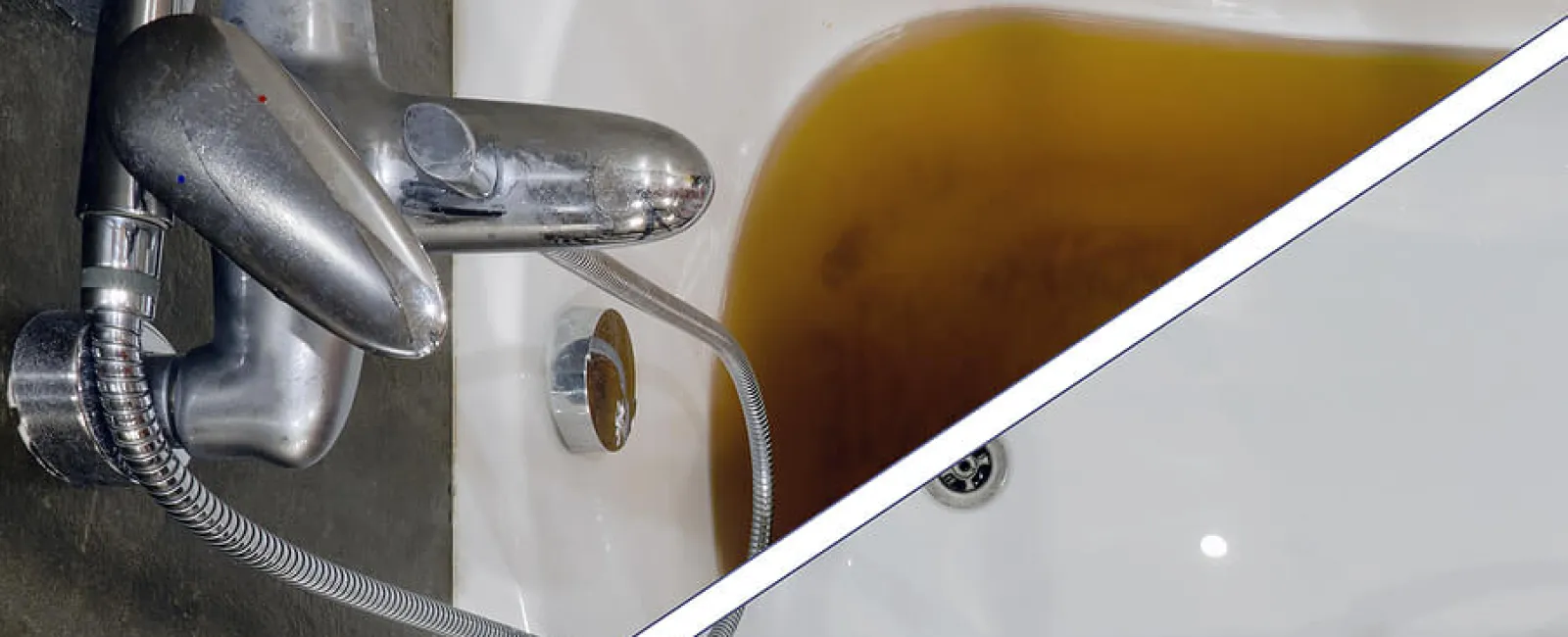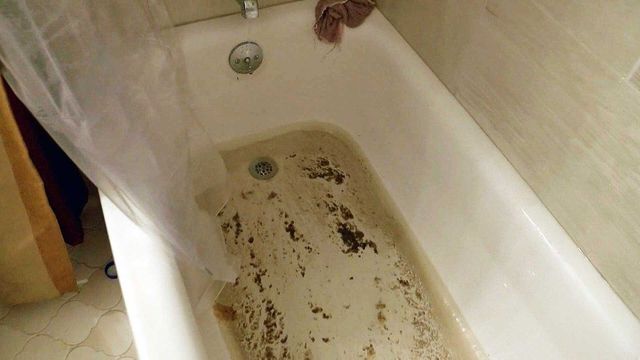My Definitive Answer: Sewage Coming Up Through the Bathtub
My Definitive Answer: Sewage Coming Up Through the Bathtub
Blog Article
What are your thoughts on Why is There Sewage Coming Up Through the Bathtub?

Sewage backup in the bathtub can be an upsetting and unsanitary problem for any kind of homeowner. Not only is it troublesome, yet it additionally poses severe wellness risks and shows underlying concerns with the plumbing system. Comprehending why sewer is turning up with the bathtub is vital for taking proper action to attend to the issue properly.
Introduction to the Issue
Usual Factors for Sewage Backup
Clogs in the Sewage System Line
One of one of the most typical root causes of sewage backup is a clog in the drain line. This can happen due to the build-up of debris, oil, or international objects in the pipes, protecting against correct circulation and creating sewer to support right into your bathtub.
Tree Origin Invasion
Tree roots looking for moisture and nutrients can penetrate sewer lines via small splits or joints. In time, these origins can grow and broaden, creating considerable damages to the pipes and bring about sewage back-up concerns.
Comprehending the Trouble
When sewage starts backing up right into the tub, it's a clear indicator of an issue with the drainage system. The wastewater that ought to be flowing away from your home is instead finding its back right into your living space, which can lead to considerable damages and carcinogen.
Prospective Reasons
Numerous factors can contribute to sewer back-up in the bath tub. From clogs in the sewage system line to problems with the plumbing facilities, determining the root cause is necessary for discovering an option.
Aging Infrastructure
Older homes may have obsoleted plumbing systems that are a lot more vulnerable to corrosion, fractures, and degeneration. As pipes age, they come to be much more prone to leakages and blockages, boosting the likelihood of sewer backup occurrences.
Heavy Rainfall or Flooding
During periods of heavy rainfall or flooding, the sewer system might end up being overwhelmed with excess water, causing back-ups and overflows. This can lead to sewage supporting into bath tubs and various other fixtures inside the home.
Signs of Sewer Backup
Foul Odors
Undesirable smells emanating from drains or components, particularly in the restroom, may suggest sewage backup issues. These smells are usually solid and persistent, signaling an issue that needs instant interest.
Slow Draining Fixtures
Bathtubs, sinks, and toilets that drain gradually or otherwise in any way could be experiencing sewer backup. If multiple components are influenced all at once, it's most likely that the problem originates from an usual factor, such as the main sewage system line.
Gurgling Sounds
Unusual gurgling or gurgling noises coming from drains pipes when water is running somewhere else in the house are a sign of air trapped in the plumbing system. This air build-up can arise from sewer backup and ought to be examined promptly.
Health Threats Related To Sewage Backup
Contamination of Water Supply
Sewer backup can contaminate the water in your house, posturing a severe health threat to you and your household. Direct exposure to infected water can lead to gastrointestinal issues, skin infections, and other illnesses.
Mold Development
Dampness from sewage back-up can produce ideal conditions for mold and mildew development in your home. Mold and mildew spores can aggravate respiratory system troubles and trigger allergic reactions in sensitive people, making punctual clean-up necessary.
Spread of Illness
Sewage has unsafe germs, viruses, and bloodsuckers that can trigger a range of conditions, including liver disease, cholera, and gastroenteritis. Entering contact with sewer or polluted surface areas puts you in jeopardy of infection.
Cleaning Up After Sewer Backup
Sanitation Procedures
Extensively decontaminate and sterilize impacted areas after sewer back-up to get rid of damaging bacteria and prevent mold and mildew development. Usage suitable cleansing products and protective gear to make certain safe and reliable clean-up.
Restoration of Affected Areas
Repair any damage to floor covering, wall surfaces, or components triggered by sewer backup. Relying on the level of the damages, you might need to replace carpeting, drywall, or other products to recover your home to its pre-loss problem.
Immediate Actions to Take
Shutting Off Water System
In the event of sewage back-up, it's important to shut off the supply of water to prevent more contamination and damage. Situate the major water shutoff valve in your home and shut it off up until the issue can be dealt with.
Speaking To an Expert Plumber
Handling sewer back-up is not a do it yourself task. Get in touch with an accredited plumber with experience in managing sewage-related issues to evaluate the situation and perform necessary repair work or clean-ups.
Staying Clear Of Contact with Infected Water
Till the sewage backup is solved, avoid contact with contaminated water to avoid the spread of bacteria and virus. Use protective gear if you must remain in the damaged area and wash your hands extensively later.
Safety nets
Routine Upkeep of Sewer Lines
Schedule regular evaluations and maintenance of your sewage system lines to identify and resolve potential concerns prior to they escalate into major problems. This can consist of clearing out particles, checking for tree origin breach, and repairing any type of damaged pipelines.
Mounting Backwater Shutoffs
Take into consideration installing bayou shutoffs in your plumbing system to prevent sewer from receding right into your home during periods of heavy rainfall or flooding. These shutoffs instantly close when water starts backing up, safeguarding your building from contamination.
Appropriate Disposal of Household Waste
Prevent purging anything other than toilet paper and human waste down the toilet to stop clogs and blockages in the sewer line. Dispose of oil, oil, and various other household chemicals effectively to reduce the danger of plumbing problems.
Why Is Water Backing Up in My Bathtub When I Flush My Toilet?
What to do about a sewer line clog
First, don’t bother with plunging. No amount of plunging will dislodge the clog in a sewer line. The clog is too far away. Plungers are for clogs in the toilet itself, not the sewer line. Plus, the most likely causes of a sewer clog are:
Tree roots Flushed toys or feminine products Grease buildup Those items don’t move easily. And in the case of tree roots, the roots need to be cut out of the pipe and the pipe will need to be repaired.
You’ll need a closet auger. A closet auger is a type of plumber’s snake with a protective cover to keep from scratching the delicate porcelain toilet. If the clog is further down, you may need to remove the toilet or use one of your cleanouts to get to the clog.
We also recommend doing a video inspection of the drain to ensure that the cause of the clog has been completely removed. Otherwise, you could have the same problem again in a few days or weeks.
https://mspplumbingheatingair.com/blog/why-is-water-backing-up-in-my-bathtub-when-i-flush-my-toilet

I stumbled upon that review about Why is Sewage Backing Up Into My Bathtub? when doing a lookup on the web. Appreciated our blog entry? Please share it. Let others locate it. Thanks a bunch for your time. Revisit us soon.
Book Today!
Report this page